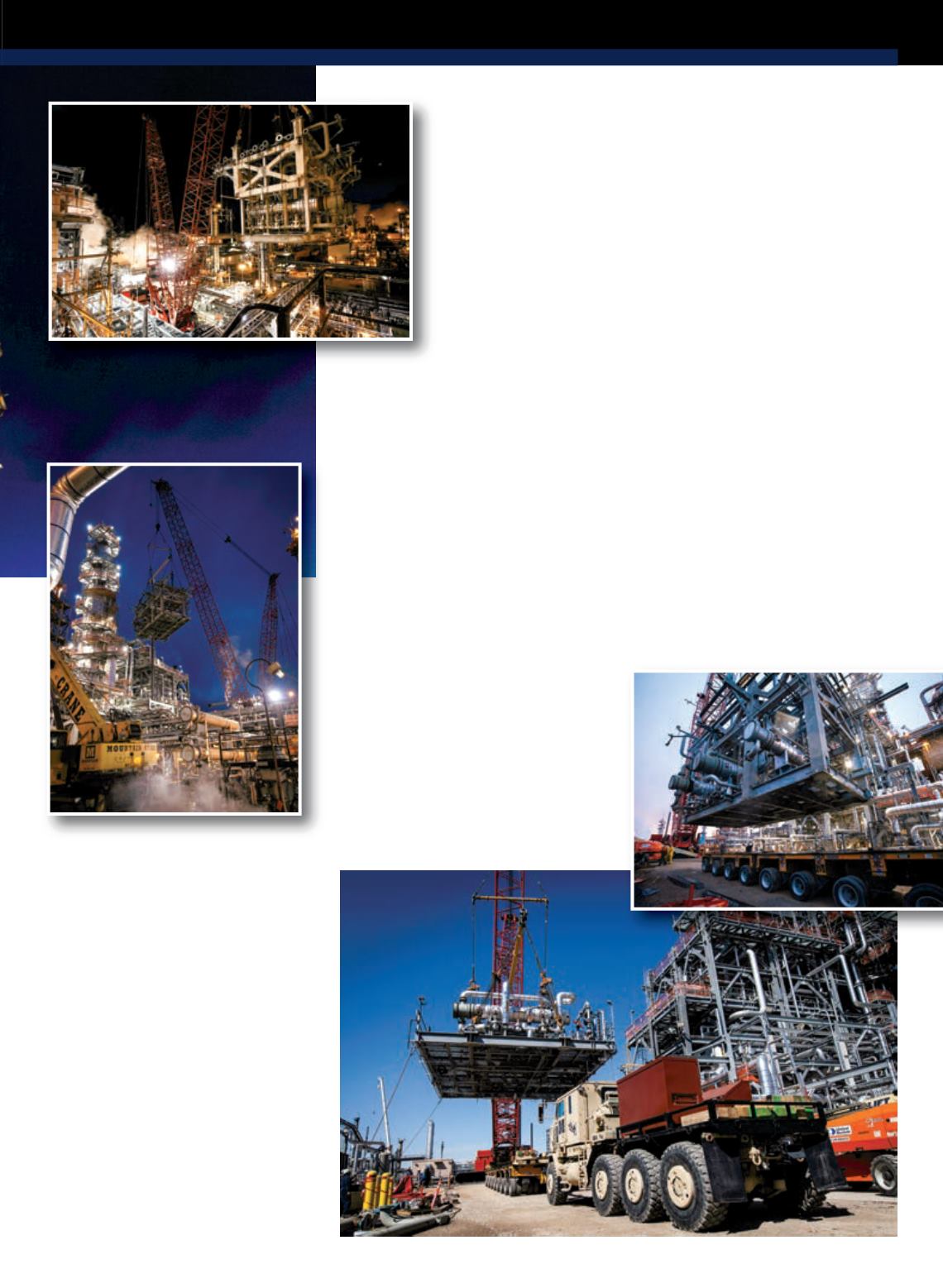
RIGGING
SITE REPORT
57
JUNE 2014
ACT
yearprior to the actual liftingof thenew
cold trainmodules.Under thedirection
ofMountain’sEngineeringDirector Jared
Belcher, the engineering team created3-D
models of theunit inCAD andused the
models todetermine theparameters and
constraints for the actual lifts.
“The initial challenge in completing the
projectwas selecting the right crane for
the job,” saidBelcher. “Many craneshave
the capacity tomake the lift, but very few
could fit into the extremely tightworking
area insideof the crudeunit.Mountain
Crane’sManitowoc2250withMaxer-2000
fit thebill perfectly.”
Duringdemolition theManitowoc2250
onlyhad two feet of clearanceon its tail
swing to existing structures.After the
demolitionwas complete theMaxer-2000
wagonwas added, changing the crane’s
capacity from300 tons to
500 tons. Thisprovided
the capacityneeded for
hoisting thenewmodules.
MountainCrane’s
engineering teamworked
closelywithChevron to
develop a127-page lift
plan that includednearly
503-Ddrawingsdetailing
all aspects of the rigging,
module transportation,
crane erection, demolition
of the existing cold train
unit, installationof thenew cold train
modules andground-bearingpressures for
all lifting scenarios.
The execution
After ayear of planning,Mountain
Crane transported the first new cold
trainmodule to the crudeunit using its
Goldhofermodular trailers. Themodules
were then rigged toMountainCrane’s
Manitowoc2250withMaxer-2000.
MountainCrane’s teamdesignedmore
than21,000pounds of rigging to allow
for quick transitions between thedifferent
modules andvaryingnumbers of picking
points.After lifting themodules off of
theGoldhofer trailers, theManitowoc
2250pivoted and tracked into the crude
unitwhile suspending themodules over
existing refinery structures.
Due to the smallwindowof time allowed
for theproject,workwasperformed
around the clock.Oneof themodules
endedup flying at night, according to
Belcher.
AGroveRT530Ewasused as an assist
craneon theproject. The30-ton capacity
rough terrain craneperformed someother
turnaroundwork at theplant and itwas
used for somedemolitionwork, pulling
exchanger bundles, flyingpipes and the
like.
MountainCrane actuallyhadnine
cranesperformingwork at the refinery
during the turnaround.
Due to expert planning andprecise
performance,MountainCranewas
able tohoist all fourmodules into their
permanent location exactly asplanned.
MountainCraneProjectManagerTyler
Poulson said: “It is very fulfilling to see
over ayear’sworthof planning executed
flawlesslybyouroperators.”
MountainCranehelpedChevron and its
other contractors successfully complete
the constructionof thenew cold trainunit
during thepreviously scheduled crude
unit turnaround, resulting inminimal
downtime andmaximum efficiency for
the refinery.
■
Due to the small window of time allowed
for the project, workwas performed
around the clock. One of themodules
ended up flying at night.
A Grove RT530Ewas used as an assist
crane on the project.
After a year of planning, Mountain
Crane transported the first new cold
trainmodule to the crude unit using its
Goldhofer modular trailers. Themodules
were then rigged toMountain Crane’s
Manitowoc 2250withMaxer 2000.


